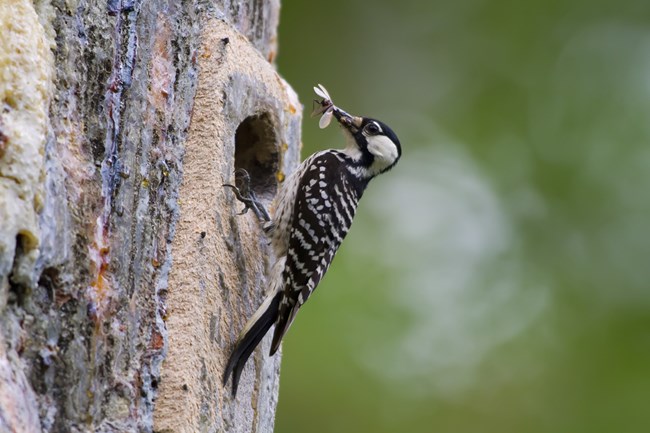|
Sensitive species are plant and animal species that are given special management considerations or legal protections due to their vulnerability to population declines or extinction. The most vulnerable species have been listed under the Endangered Species Act or by the State of Texas as endangered or threatened, while other species of concern may receive special monitoring. As a national preserve designated by Congress, Big Thicket takes an active role in re-establishing and protecting any sensitive species that may occur within its boundaries. The following are just a few examples of sensitive species that currently or historically occurred in the Big Thicket. 
NPS / HERBERT YOUNG Texas Trailing PhloxPhlox nivalis ssp. texensis (Endangered – Federal & State) 
USFWS Photo Red-Cockaded WoodpeckerPicoides borealis (Endangered – Federal & State) Louisiana Black BearUrsus americanus luteolus (Threatened – State) State of Texas Listed Threatened and Endangered SpeciesIn addition to the federal listed species, Big Thicket contains numerous species listed by the state of Texas as endangered or threatened:
For additional information on threatened and endangered species, as well as other species of conservation concern in Texas, please visit the Texas Parks and Wildlife Nongame and Rare Species Program website. Migratory BirdsBig Thicket is host to a long list of migratory bird species due to its diversity of ecosystems and location within an important migratory flyway. All migratory bird species in the U.S. (over 1,000 species) receive some protection under the Migratory Bird Treaty Act. Big Thicket is especially imortant for Neotropical migrants, which travel every in spring from Central and South America to nest in forests in North America. National Park Service staff periodically conduct surveys for breeding birds in the preserve. For additional information on the Migratory Bird Treaty Act, please visit the U.S. Fish & Wildlife Service - Migratory Bird Program website. |
Last updated: April 28, 2025
